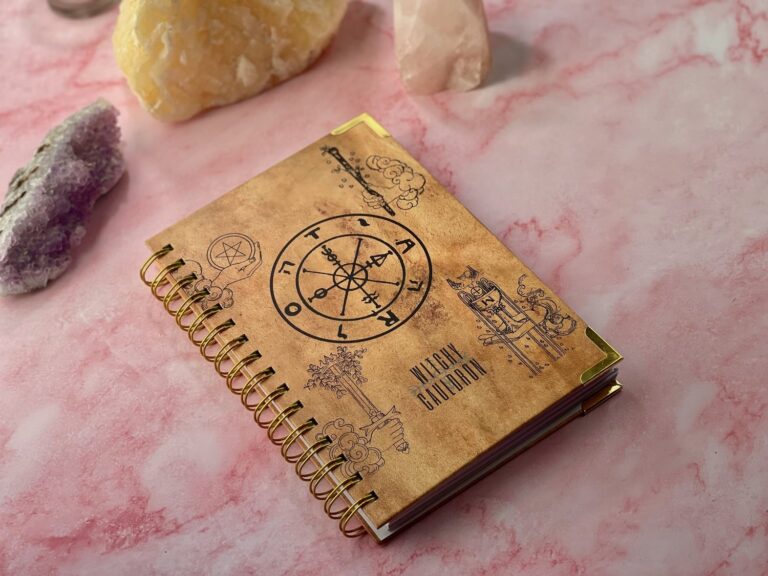This post contains affiliate links and Amanda Linette Meder will be compensated if you make a purchase after clicking these links.
One of the main advantages of Tarot is that it is an intuitive development tool.
Tarot reading is a combination of intuition, symbolism and context. If you are working to deepen your intuitive practice, using it to interpret tarot cards is a great way to expand your ability to interpret symbolism and context.
Witchy Cauldron, the best-selling instructional tarot author on Etsy, graciously sent me her new tarot journal for review.
I’m glad she did. I received my first tarot card in graduate school as a graduation gift for my sister. My second and third tarot decks were gifts from my mother.
It was over ten years ago that I shuffled my first deck of tarot cards, and I haven’t put them down since then.
Of all the forms of divination cards, tarot is probably my favorite because tarot is a 78-card system. It’s the same no matter which deck you pick up; any team of artists can design a tarot deck, and once you understand the system, you’ll be able to read the deck.
The earliest historical references to tarot in all its forms are also quite ancient, originating in the 1440s to 1450s (mid-15th century).
Today, the most famous deck is the Knight-Waite Tarot, published in 1909, created by Arthur Edward Waite and illustrated by Pamela Coleman Smith illustration.
Their legacy is quite amazing as most of the tarot decks seen on the market today were inspired by the Rider Waite Tarot decks. It is the most common tarot deck in modern times.
